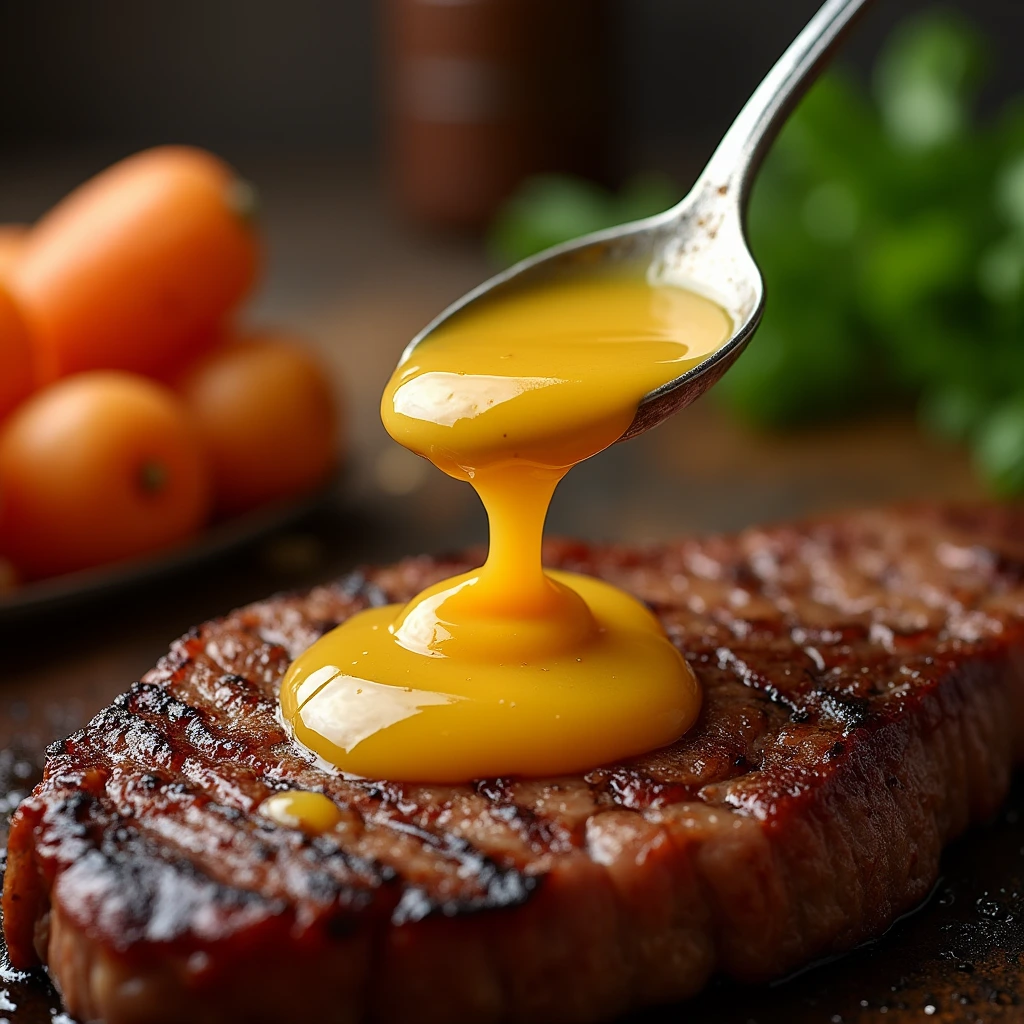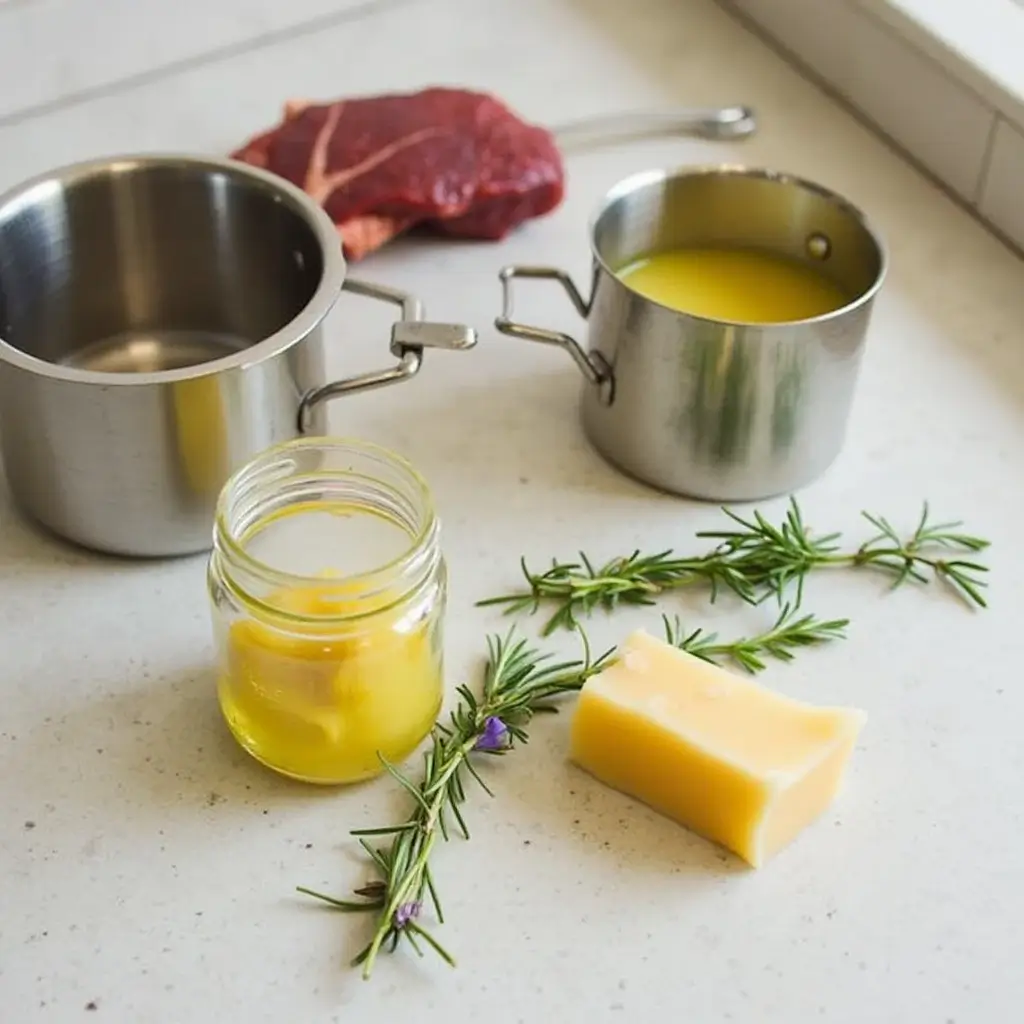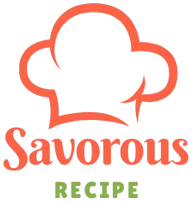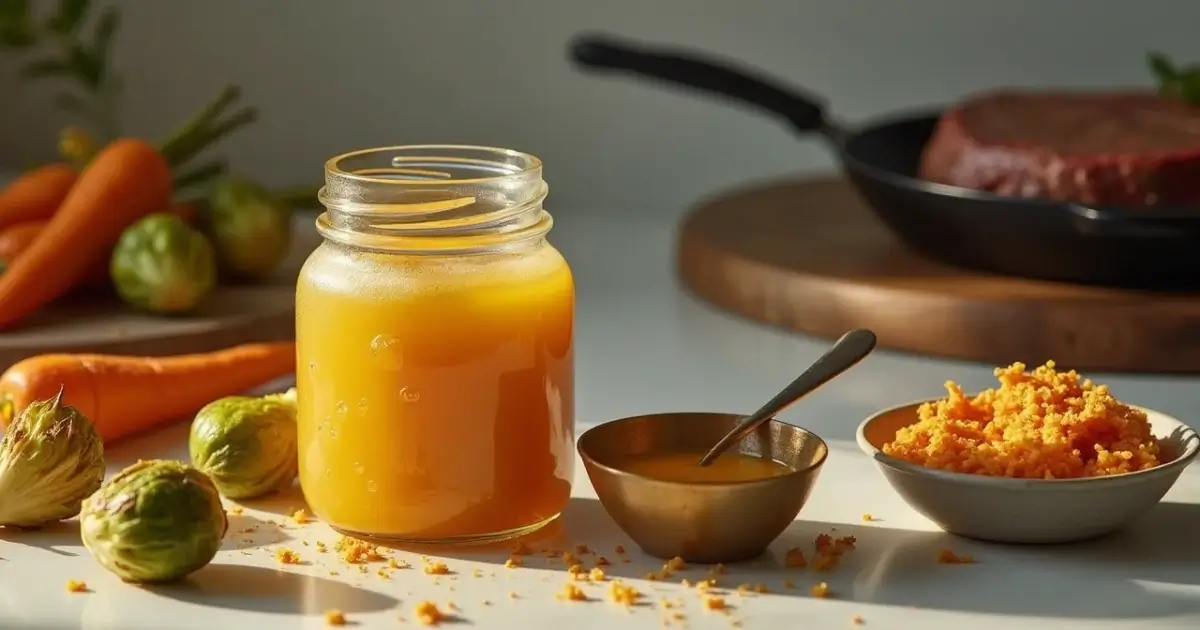Have you ever wondered what makes gourmet dishes so irresistibly rich and flavorful? The secret might just be Wagyu beef tallow—a natural, umami-packed cooking fat that transforms ordinary meals into extraordinary culinary experiences. Whether you’re frying, roasting, or sautéing, this decadent ingredient offers unmatched depth and versatility, making it a must-have in any kitchen.
With its luxurious texture and high-heat stability, Wagyu beef tallow is perfect for elevating everything from crispy roasted vegetables to perfectly seared steaks. And the best part? It’s not just about indulgence; it’s about enhancing every bite with a bold, savory richness you’ll absolutely love. Ready to take your cooking to the next level? Let’s dive in!
Why You’ll Love Wagyu Beef Tallow
Wagyu beef tallow isn’t just another cooking fat—it’s a decadent upgrade that can elevate your meals to gourmet levels with minimal effort. Here’s why you’re going to fall in love with it:

- Unmatched Flavor: Infused with the rich, buttery essence of premium Wagyu beef, this tallow adds a depth of umami to every dish, making even simple recipes taste luxurious.
- Versatility in Cooking: Perfect for frying, roasting, or sautéing, Wagyu tallow excels in high-heat cooking, delivering golden, crispy results without breaking a sweat.
- Healthier Alternative: Naturally sourced and free from artificial additives, this tallow offers a healthier option compared to processed oils, with a bonus of enhanced flavor.
- Sustainability at Its Best: Using Wagyu tallow is an eco-friendly way to make the most of every part of the beef, reducing waste and honoring the culinary tradition of nose-to-tail cooking.
Imagine tossing crispy potatoes in this golden fat, drizzling it over roasted vegetables, or using it to sear a steak to perfection. Every dish you make with Wagyu beef tallow will have your family and friends asking for your secret ingredient!
Ingredients of Wagyu Beef Tallow
Before we dive into the recipe, let’s gather everything you’ll need. Don’t worry—it’s a short list, but each ingredient packs a punch!

For Rendering Wagyu Beef Tallow:
- Wagyu Beef Fat Trimmings: About 1 pound of high-quality Wagyu fat trimmings. Visit a butcher or specialty meat shop to source the best cuts.
- Water: 2-3 tablespoons to help kickstart the rendering process and prevent burning.
For Cooking with Wagyu Beef Tallow:
- Rendered Wagyu Beef Tallow: Approximately 2-3 tablespoons, depending on your recipe. This versatile fat is perfect for frying, roasting, or even baking.
- Optional Add-Ins:
- Fresh herbs like rosemary or thyme for infusing extra flavor.
- A pinch of sea salt for seasoning, especially when roasting vegetables or frying potatoes.
Tools You’ll Need:
- Heavy-Bottomed Pan or Dutch Oven: Ideal for even heat distribution during rendering.
- Fine-Mesh Strainer or Cheesecloth: Essential for straining the rendered tallow to achieve a smooth, clean texture.
- Glass Jar with Lid: Perfect for storing your Wagyu tallow after it cools.
With these simple ingredients and tools, you’re ready to create a luxurious, flavor-enhancing ingredient that will take your cooking to the next level. Now let’s move on to the step-by-step process!
Instructions of Wagyu Beef Tallow
Rendering your own Wagyu beef tallow is simpler than you might think. Follow these steps to create a smooth, golden fat that’s perfect for cooking or storing.

1: Prepare the Fat
- Trim and Chop: If your Wagyu fat trimmings aren’t prepped, trim away any excess meat and chop the fat into small, uniform pieces. This helps it render evenly and quickly.
- Optional Freezing: Pop the fat into the freezer for about 15-20 minutes to make slicing easier, especially if it’s slippery.
2: Start the Rendering Process
- Heat Gently: Place the chopped fat into a heavy-bottomed pan or Dutch oven. Add 2-3 tablespoons of water to prevent burning as the fat begins to melt.
- Simmer Slowly: Cook over low heat, stirring occasionally to encourage even melting. Be patient—low and slow is key for extracting the purest tallow.
3: Strain the Tallow
- Separate the Solids: Once the fat has fully melted and you see small crispy bits (known as cracklings), remove the pan from heat.
- Strain Carefully: Pour the liquid tallow through a fine-mesh strainer or cheesecloth into a heatproof glass jar. This step ensures a clean, smooth finish.
4: Cool and Store
- Let it Set: Allow the rendered tallow to cool at room temperature until it solidifies into a creamy white texture.
- Store Properly: Seal the jar with a lid and store in the fridge for up to 3 months, or in the freezer for longer shelf life.
Bonus Tips:
- Save those crispy cracklings! They make a delicious snack or topping for salads and soups.
- For infused tallow, add fresh herbs like rosemary or garlic cloves during the last 5 minutes of rendering.
That’s it! You’ve just made your own Wagyu beef tallow—easy, satisfying, and ready to elevate your cooking. Now let’s explore some pro tips and variations!
Pro Tips and Variations
Want to get the most out of your Wagyu beef tallow? These tips and creative variations will help you maximize its flavor and versatility:

Pro Tips for Rendering and Using Tallow
- Render Low and Slow: Patience is key! Keeping the heat low ensures the fat melts evenly and retains its rich flavor without burning.
- Strain Thoroughly: Use a double layer of cheesecloth or a fine-mesh strainer to achieve a clean, smooth tallow with no impurities. This step is crucial if you’re planning to store it long-term.
- Storage Matters: Store tallow in an airtight glass jar to preserve its freshness. For extended use, freeze it in small, portioned amounts for easy access.
Creative Variations to Try
- Infused Tallow: Add aromatics like garlic, rosemary, thyme, or chili flakes during the rendering process to create a flavored tallow perfect for specific dishes. Remove the herbs or spices before storing.
- Savory Popcorn Oil: Use melted Wagyu beef tallow to pop your favorite popcorn. The result? A rich, savory snack with a gourmet twist.
- Golden Frying Oil: Fry your potatoes, chicken, or fish in tallow for an irresistibly crispy, golden finish that’s bursting with flavor.
- Roasting Vegetables: Toss root vegetables like carrots, potatoes, and Brussels sprouts with a spoonful of melted tallow before roasting for caramelized perfection.
Sustainability Tip
Don’t discard the cracklings! These crispy bits can be used as:
- A topping for soups, salads, or baked potatoes.
- A mix-in for savory muffins or cornbread.
- A standalone snack (they’re seriously addictive).
By following these tips and trying out variations, you’ll not only elevate your cooking but also get creative with how you use this luxurious ingredient. Let’s see how to serve it in your next masterpiece!
How to Serve
Wagyu beef tallow is a culinary powerhouse that can elevate a variety of dishes. Here are some of the best ways to use it and impress your taste buds:

1. As a Cooking Base
- For Sautéing: Use a spoonful of melted tallow to sauté garlic, onions, or vegetables. The rich, savory flavor enhances even the simplest ingredients.
- For Frying: Fry eggs, potatoes, or even chicken in Wagyu beef tallow for a golden, crispy texture and an extra layer of umami.
2. For Roasting
- Vegetables: Toss carrots, sweet potatoes, or Brussels sprouts in melted tallow before roasting. The result is caramelized perfection with a subtle beefy richness.
- Meats: Brush tallow over a roast chicken or turkey before it goes into the oven. It creates a beautifully browned, crispy skin.
3. As a Finishing Touch
- On Steaks: After grilling or pan-searing a steak, brush a small amount of melted tallow on top for a buttery finish that enhances the beef’s natural flavor.
- On Popcorn: Drizzle melted tallow over freshly popped popcorn for a decadent, savory snack with a gourmet twist.
4. In Baking
Believe it or not, Wagyu beef tallow can replace butter or shortening in savory baked goods like biscuits, pie crusts, or cornbread. It adds a unique depth of flavor while maintaining a flaky texture.
5. Homemade Condiments
Use rendered tallow to make homemade beef tallow candles, gourmet tallow-based spreads, or even as a base for compound butters infused with herbs or spices.
Pro Serving Tip
Pair dishes cooked with Wagyu beef tallow with fresh, bright flavors like citrus, herbs, or a crisp salad to balance the richness. This creates a well-rounded meal that’s both indulgent and satisfying.
With Wagyu beef tallow in your kitchen, the possibilities are endless—and delicious! Ready to explore even more ways to make the most of this luxurious ingredient? Let’s wrap things up.
Conclusion
Wagyu beef tallow is more than just a cooking fat—it’s a versatile, flavor-packed ingredient that can elevate your dishes from ordinary to extraordinary. Whether you’re searing a steak, roasting vegetables, or creating savory snacks, the rich, umami-filled tallow infuses everything with a decadent depth that’s sure to impress.
By rendering your own Wagyu beef tallow, you unlock a world of culinary possibilities. It’s easy to make, store, and use, and the results are always worth the effort. With just a few simple steps, you can add this luxurious fat to your kitchen arsenal and take your cooking to the next level.
Don’t forget to get creative! From flavored tallow for frying to adding a finishing touch on meats and vegetables, the opportunities are endless. Plus, remember to repurpose the crispy cracklings for a tasty snack or garnish.
Ready to indulge in the magic of Wagyu beef tallow? Start cooking and experience the difference it makes in every bite. Happy cooking!

wagyu beef tallow
Ingredients
For Rendering Wagyu Beef Tallow:
- Wagyu Beef Fat Trimmings: About 1 pound of high-quality Wagyu fat trimmings. Visit a butcher or specialty meat shop to source the best cuts.
- Water: 2-3 tablespoons to help kickstart the rendering process and prevent burning.
For Cooking with Wagyu Beef Tallow:
- Rendered Wagyu Beef Tallow: Approximately 2-3 tablespoons depending on your recipe. This versatile fat is perfect for frying, roasting, or even baking.
Optional Add-Ins:
- Fresh herbs like rosemary or thyme for infusing extra flavor.
- A pinch of sea salt for seasoning especially when roasting vegetables or frying potatoes.
Tools You’ll Need:
- Heavy-Bottomed Pan or Dutch Oven: Ideal for even heat distribution during rendering.
- Fine-Mesh Strainer or Cheesecloth: Essential for straining the rendered tallow to achieve a smooth clean texture.
- Glass Jar with Lid: Perfect for storing your Wagyu tallow after it cools.
Instructions
1: Prepare the Fat
- Trim and Chop: If your Wagyu fat trimmings aren’t prepped, trim away any excess meat and chop the fat into small, uniform pieces. This helps it render evenly and quickly.
- Optional Freezing: Pop the fat into the freezer for about 15-20 minutes to make slicing easier, especially if it’s slippery.
2: Start the Rendering Process
- Heat Gently: Place the chopped fat into a heavy-bottomed pan or Dutch oven. Add 2-3 tablespoons of water to prevent burning as the fat begins to melt.
- Simmer Slowly: Cook over low heat, stirring occasionally to encourage even melting. Be patient—low and slow is key for extracting the purest tallow.
3: Strain the Tallow
- Separate the Solids: Once the fat has fully melted and you see small crispy bits (known as cracklings), remove the pan from heat.
- Strain Carefully: Pour the liquid tallow through a fine-mesh strainer or cheesecloth into a heatproof glass jar. This step ensures a clean, smooth finish.
4: Cool and Store
- Let it Set: Allow the rendered tallow to cool at room temperature until it solidifies into a creamy white texture.
- Store Properly: Seal the jar with a lid and store in the fridge for up to 3 months, or in the freezer for longer shelf life.
Notes
- Calories: 120
- Fat: 14g
- Saturated Fat: 6g
- Cholesterol: 35mg
- Sodium: 0mg
- Carbohydrates: 0g
- Protein: 0g
- Fiber: 0g
- Sugar: 0g
FAQs
Here are the answers to some of the most common questions
Wagyu beef tallow is a versatile fat that’s ideal for high-heat cooking methods like frying, roasting, and sautéing. Its rich, buttery flavor enhances everything from steak and vegetables to baked goods and popcorn. It’s also used as a finishing oil to add depth to dishes.
While both Wagyu beef tallow and butter add richness to dishes, Wagyu tallow offers a higher smoke point, making it more suitable for high-heat cooking. Additionally, it has a unique, savory flavor that butter can’t quite match, especially when used for frying or roasting.
Beef tallow is generally considered halal if it comes from a halal-certified source. It’s important to verify the specific sourcing and slaughter methods of the beef to ensure it meets halal dietary standards.
Beef tallow is rendered fat from cows. It’s a solid fat at room temperature and is often used in cooking for frying, roasting, and even baking. It has a rich, savory flavor and is known for its ability to produce crispy, golden textures in foods like fried potatoes and meats.
Wagyu beef tallow contains a higher percentage of monounsaturated fats compared to regular beef tallow, making it a somewhat healthier option than many other animal fats. However, like all fats, it should be consumed in moderation. It’s a flavorful alternative to oils and butters in many cooking applications.
Yes! Cooking steak in Wagyu beef tallow is an excellent way to achieve a beautifully seared crust while infusing the meat with deep, savory flavors. Its high smoke point makes it perfect for frying or pan-searing steaks to perfection.

